
Compost mountain
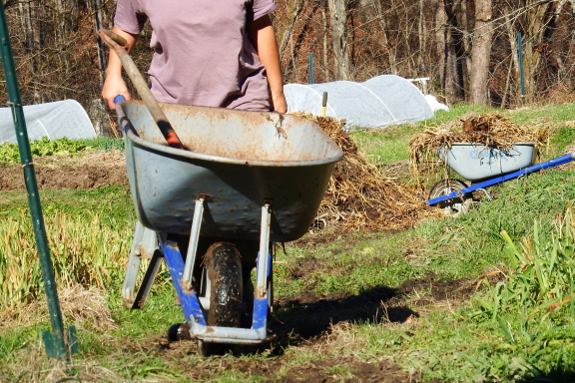
A really wet year in 2014 proved that our current fertilization source --- composted horse manure
from a neighboring farm --- isn't sustainable. Yes, it's a waste
product at the source and makes our garden thrive, but if we can't get
the manure from point A to point B we're sunk. So one of my big goals
for 2015 was to to work on homegrown compost. To that end, I've been
gathering piles of weeds all summer, and now it's finally time to build a
compost pile.
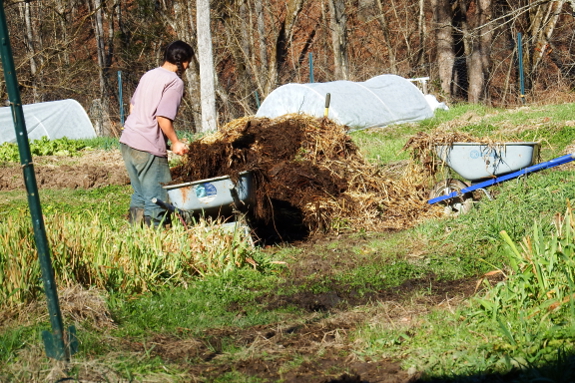
I didn't take any photos
on day one, so just pretend what you see here is starting on the ground
instead of on the side of an already built compost pile. That said, the
first layer consists of partially composted summer weeds...
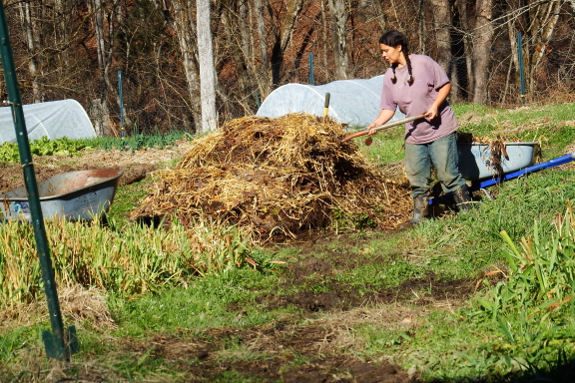
...onto which I sprinkled a thinner layer of bedding from the chicken coop to boost nitrogen levels...
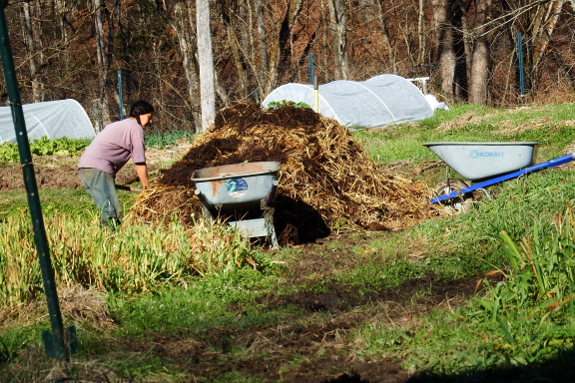
...then I added a layer
of 2/3-composted weeds to inoculate microbes and other critters. After
many wheelbarrows of each ingredient and quite a few layers, I had a
huge pile of incipient fertility.
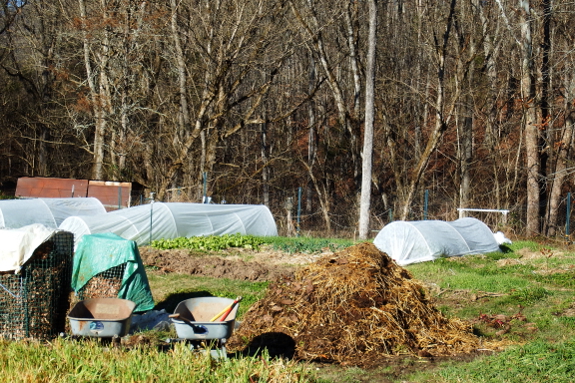
I wasn't done yet,
though. Since over half of the compostables had been under cover, the
pile needs a couple of rains before I'll cover it up and let it cook.
During that time, I'll also pour on as much urine as we can come up with
to help the compost heat up enough to kill weed seeds. I'm not counting
on that effect, but it sure would be nice. Finally, if I get cabin
fever in February, I may turn the edges into the center to ensure
complete composting.
Since I know this pile
won't be nearly enough to feed our 2016 vegetable garden, I've got more
tricks up my sleeve. Coming up tomorrow --- playing with goat poop! With
a preview like that, how could you stay away?
Want more in-depth information? Browse through our books.
Or explore more posts by date or by subject.
About us: Anna Hess and Mark Hamilton spent over a decade living self-sufficiently in the mountains of Virginia before moving north to start over from scratch in the foothills of Ohio. They've experimented with permaculture, no-till gardening, trailersteading, home-based microbusinesses and much more, writing about their adventures in both blogs and books.
Want to be notified when new comments are posted on this page? Click on the RSS button after you add a comment to subscribe to the comment feed, or simply check the box beside "email replies to me" while writing your comment.

Hi Anna and Mark,
You have probably already read: King - Farmers of Forty centuries
and Tigray Ethiopia compost method and the Indore [India] method?
I have been working with a local farmer who considers his compost to be his unfair advantage. I have recently started some inside stuff on some of his 'filtered' compost [which I helped filter].
The Tigray method uses 4 inches of green stuff then 1/2 inch manure stuff and repeats that to make the stack.
Anyways, my point is that 'proper' composting seems to be MUCH more important than I ever suspected. That said: I am not sure I could define proper composting :). It would be most interesting to get mineral measurements of different composts but I doubt that 'compost' would be uniform enough to make those measurements meaningful?
FWIW Woods End Labs tests compost commercially and has published some VERY interesting stories about 'toxic' compost on their website.
Merry Christmas to all :).
John